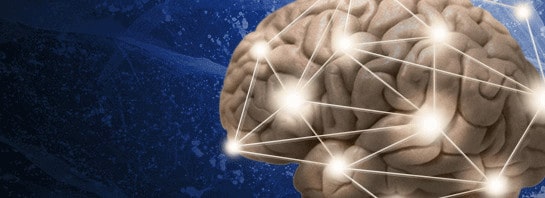Study led by Cedars-Sinai researchers uses computer modeling software to calculate target and programming details
Although deep brain stimulation can be an effective therapy for dystonia – a potentially crippling movement disorder – the treatment isn’t always effective, or benefits may not be immediate. Precise placement of DBS electrodes is one of several factors that can affect results, but few studies have attempted to identify the “sweet spot,” where electrode placement yields the best results.
Researchers led by investigators at Cedars-Sinai, using a complex set of data from records and imaging scans of patients who have undergone successful DBS implantation, have created 3-D, computerized models that map the brain region involved in dystonia. The models identify an anatomical target for further study and provide information for neurologists and neurosurgeons to consider when planning surgery and making device programming decisions.
“We know DBS works as a treatment for dystonia, but we don’t know exactly how it works or why some patients have better, quicker results than others. Patient age, disease duration and other underlying factors have a role, and we believe electrode positioning and device programming are critical, but there is no consensus on ideal device placement and optimal programming strategies,” said Michele Tagliati, MD, director of the Movement Disorders Program in the Department of Neurology at Cedars-Sinai.
“This modeling paves the way for the construction of practical therapeutic and investigational targets,” added Tagliati, senior author of an article now available on the online edition of Annals of Neurology.
Medications usually are the first line of treatment for dystonia and several other movement disorders, but if drugs fail – as frequently happens – or side effects are excessive, neurologists and neurosurgeons may supplement them with deep brain stimulation. Electrical leads are implanted deep in the brain, and a pulse generator is placed near the collarbone. The device is later programmed with a remote, hand-held controller.
To calm the disorganized muscle contractions of dystonia, doctors generally target a brain structure called the globus pallidus, but studies on precise positioning of electrode contacts and the best programming parameters – such as the intensity and frequency of electrical stimulation – are rare and conflicting. Finding the most effective settings can take months of fine-tuning.
In this retrospective study, investigators examined a database of 94 patients with the most common genetic form of dystonia, DYT1, who had been treated with DBS for at least a year. They selected 21 patients who had good responses to treatment, compiled their demographic and treatment information, and used magnetic resonance imaging scans to create 3-D anatomical models with a fine grid to show exact location of relevant brain structures.
The investigators then simulated the placement of electrodes as they were positioned in the patients’ brains and input the actual stimulation parameters into a computer program – a “volume of tissue activation” model – which calculated detailed information specific to each patient and each electrode. The model draws on principles of neurophysiology – the way nerve cells respond to DBS – the biophysics of voltage distribution from electrodes, and the anatomy of the globus pallidus and surrounding structures.
“We found that clinicians were applying relatively large amounts of energy to wide swaths of the globus pallidus, but the area in common among most individuals was much smaller. We interpret this as being the potential ‘target within the target,’ and if our results are validated in further research and clinical practice, computer modeling may offer a physiologically-based, data-driven, visualized approach to clinical decision-making,” Tagliati said.
If our reporting has informed or inspired you, please consider making a donation. Every contribution, no matter the size, empowers us to continue delivering accurate, engaging, and trustworthy science and medical news. Independent journalism requires time, effort, and resources—your support ensures we can keep uncovering the stories that matter most to you.
Join us in making knowledge accessible and impactful. Thank you for standing with us!

